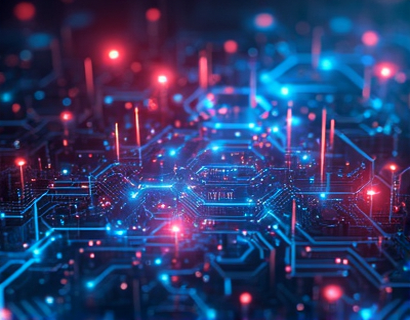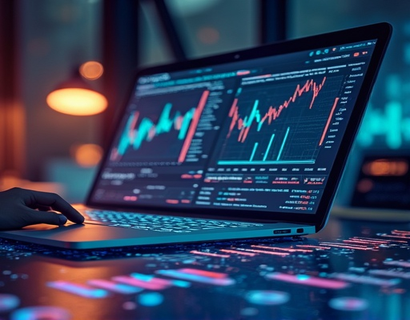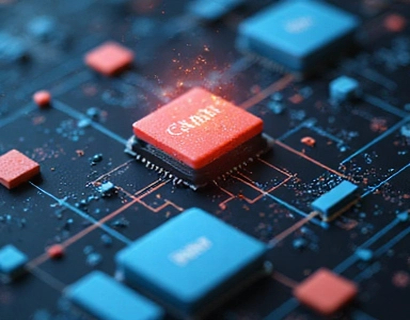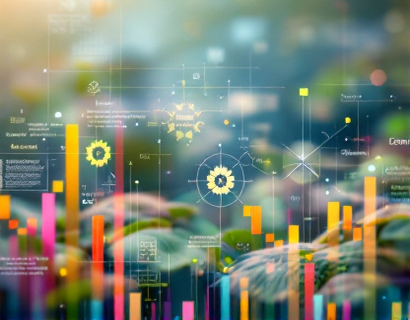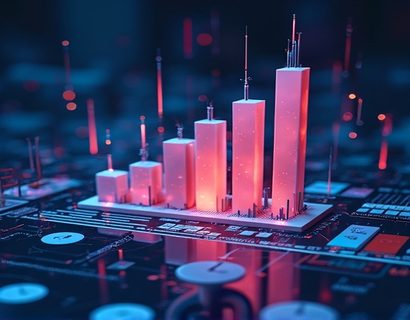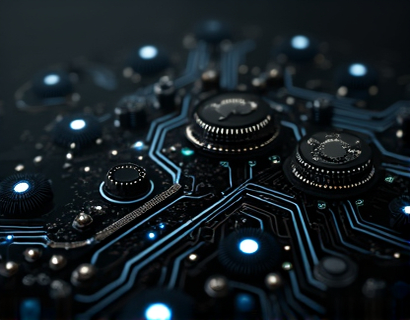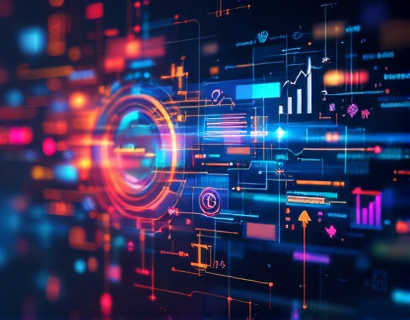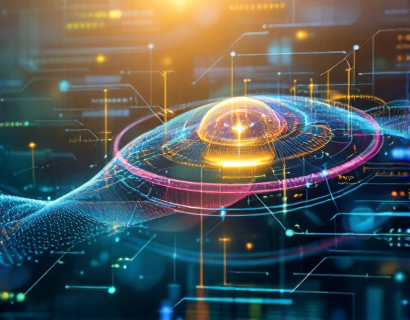Exploring the Synergy of Crypto and AI: Pioneering Digital Transformation
The intersection of cryptocurrency and artificial intelligence represents a frontier in digital innovation, where advanced algorithms and blockchain technology converge to redefine user experiences. This synergy is not just a technological curiosity but a powerful force driving the next wave of digital transformation. As tech enthusiasts and early adopters, understanding this convergence is crucial for grasping the potential of future technologies.
The integration of AI with cryptocurrency is reshaping how we perceive and interact with digital assets. AI enhances the efficiency, security, and usability of blockchain-based systems, while cryptocurrency provides a decentralized and transparent medium for AI to operate on. This combination opens up new possibilities for applications ranging from financial services to smart contracts and beyond.
Enhanced Security through AI and Blockchain
One of the most significant benefits of merging AI with cryptocurrency is the enhancement of security measures. Traditional cybersecurity methods often struggle with the evolving landscape of cyber threats. AI, with its ability to analyze vast amounts of data in real-time, can detect and respond to anomalies more effectively than conventional systems. In the context of blockchain, AI can monitor transactions and network activity to identify potential security breaches or fraudulent activities, ensuring the integrity of the blockchain.
Smart contracts, self-executing contracts with the terms directly written into code, can also benefit from AI. AI algorithms can analyze the conditions and outcomes of smart contracts, ensuring they are executed as intended and identifying any potential vulnerabilities. This not only increases the reliability of smart contracts but also reduces the risk of human error in their deployment and management.
Optimized User Experiences with AI-Driven Interfaces
The user experience in cryptocurrency and blockchain applications is often criticized for being complex and user-unfriendly. AI can significantly improve this by creating more intuitive and personalized interfaces. By analyzing user behavior and preferences, AI can tailor the user interface to individual needs, making it easier for users to navigate and interact with blockchain applications.
For instance, AI-powered chatbots can provide real-time assistance and guidance to users, answering queries and helping them understand complex concepts. These chatbots can operate 24/7, ensuring that user support is always available. Additionally, AI can optimize the onboarding process, guiding new users through the necessary steps to set up and use blockchain services efficiently.
Efficient Trading and Market Analysis
The cryptocurrency market is known for its volatility and complexity. AI can bring a level of sophistication to trading and market analysis that was previously unattainable. By processing and analyzing vast amounts of market data, AI algorithms can identify patterns and trends that human traders might miss. This leads to more informed decision-making and potentially higher returns.
AI-driven trading bots can execute trades based on predefined strategies, operating around the clock without the emotional biases that affect human traders. These bots can also adapt to changing market conditions, adjusting their strategies in real-time to maximize profits. For investors, this means access to advanced trading tools that can help them navigate the complexities of the crypto market with greater confidence.
Decentralized Finance (DeFi) and AI
Decentralized Finance (DeFi) is a rapidly growing sector within the cryptocurrency ecosystem, offering a range of financial services such as lending, borrowing, and yield farming. AI plays a crucial role in enhancing the functionality and accessibility of DeFi platforms. By analyzing user data and market conditions, AI can optimize lending rates, risk assessments, and investment strategies.
AI can also help in detecting and mitigating risks in DeFi protocols. For example, AI algorithms can monitor the liquidity of decentralized exchanges and predict potential flash loan attacks, allowing platforms to take preventive measures. This not only enhances the security of DeFi applications but also builds trust among users who are often wary of the risks associated with decentralized systems.
Supply Chain Transparency and Traceability
Beyond financial applications, the combination of AI and cryptocurrency is transforming supply chain management. Blockchain provides a transparent and immutable ledger for tracking goods from production to delivery. AI can further enhance this by analyzing data from various points in the supply chain, identifying bottlenecks, and optimizing logistics. This leads to more efficient and reliable supply chains, reducing costs and improving customer satisfaction.
Cryptocurrency can facilitate transactions within the supply chain, ensuring that payments are secure and transparent. Smart contracts can automate payment processes based on predefined conditions, such as the successful delivery of goods. AI can monitor these transactions and provide real-time insights, helping businesses make data-driven decisions.
Healthcare and AI-Driven Blockchain Solutions
The healthcare industry is another area where the synergy of AI and cryptocurrency is making a significant impact. Blockchain can ensure the secure and privacy-preserving storage and sharing of medical records. AI can analyze these records to provide insights for diagnosis, treatment, and research. For instance, AI algorithms can identify patterns in patient data to predict disease outbreaks or personalize treatment plans.
Cryptocurrency can also play a role in incentivizing data contributors in blockchain-based healthcare systems. Patients can be rewarded with tokens for sharing their medical data, which can then be used to train AI models. This not only enhances the quality of AI-driven healthcare solutions but also empowers patients by giving them control over their data.
Challenges and Considerations
While the potential of AI and cryptocurrency is vast, there are several challenges that need to be addressed. One of the primary concerns is regulatory compliance. The decentralized nature of blockchain and the pseudonymous nature of cryptocurrencies pose unique challenges for regulators. Ensuring that AI-driven blockchain applications comply with existing laws and regulations is essential for their widespread adoption.
Another challenge is the technical complexity involved in integrating AI with blockchain systems. Developers need to possess a deep understanding of both technologies to create robust and efficient solutions. Additionally, the energy consumption of blockchain, particularly proof-of-work systems, is a significant environmental concern. Exploring more sustainable consensus mechanisms, such as proof-of-stake, is crucial for the long-term viability of these technologies.
Future Prospects and Innovations
The future of AI and cryptocurrency is bright, with numerous innovations on the horizon. One area of interest is the development of AI-powered oracles, which can provide reliable and trustworthy data to smart contracts. This is particularly important for decentralized applications that rely on external data sources.
Another exciting development is the integration of AI with quantum computing. Quantum computers have the potential to solve complex problems that are currently infeasible for classical computers. When combined with AI and blockchain, this could lead to breakthroughs in areas such as cryptography, optimization, and data analysis.
Furthermore, the rise of Web3, a decentralized internet powered by blockchain, AI, and other emerging technologies, promises a more user-centric and secure online experience. Web3 applications will leverage AI to create personalized and interactive environments, redefining how we interact with the digital world.
In conclusion, the convergence of AI and cryptocurrency is driving a new era of digital transformation. By enhancing security, optimizing user experiences, and revolutionizing various industries, this synergy is paving the way for a more efficient, transparent, and innovative future. As tech enthusiasts and early adopters, staying informed about these developments is key to harnessing the full potential of this exciting technological landscape.





